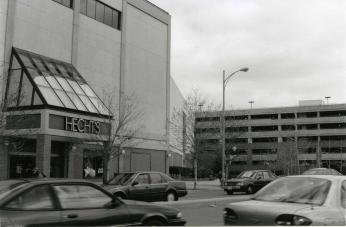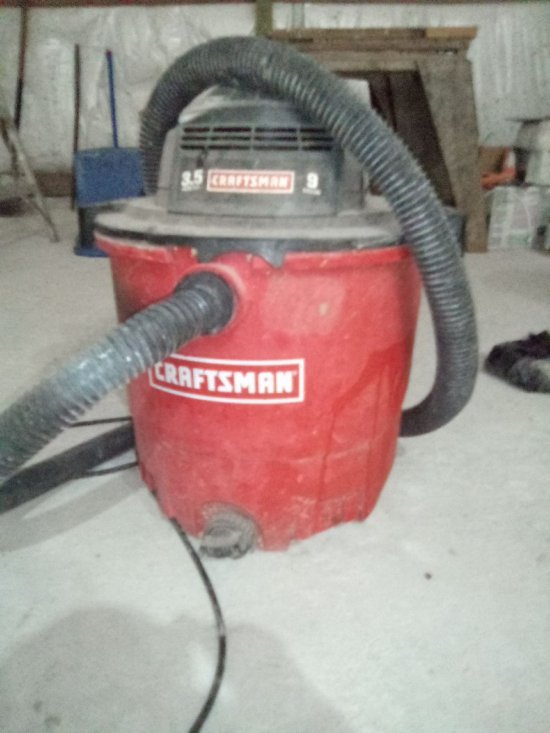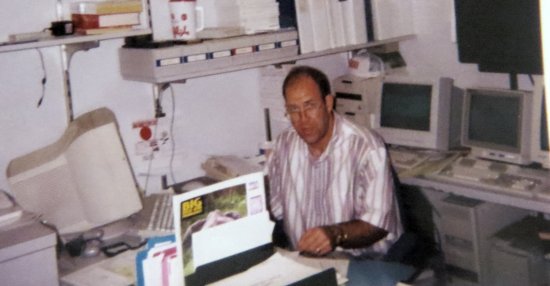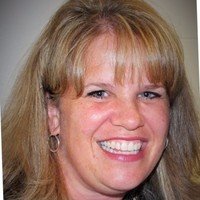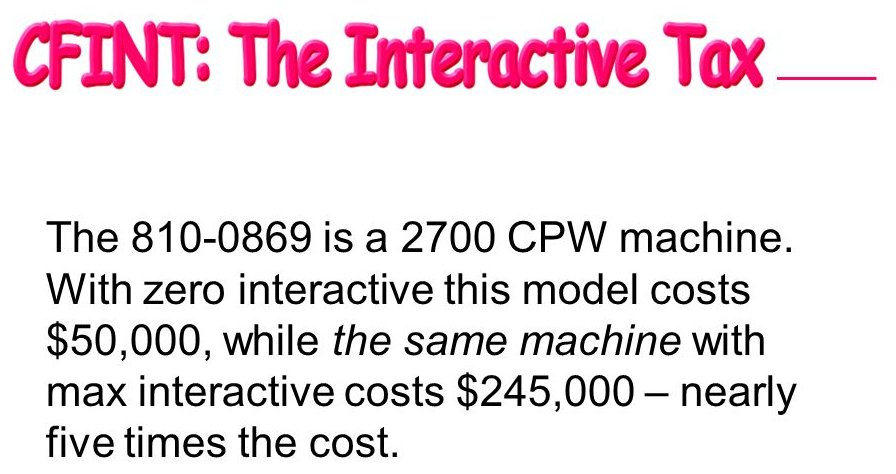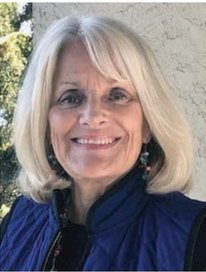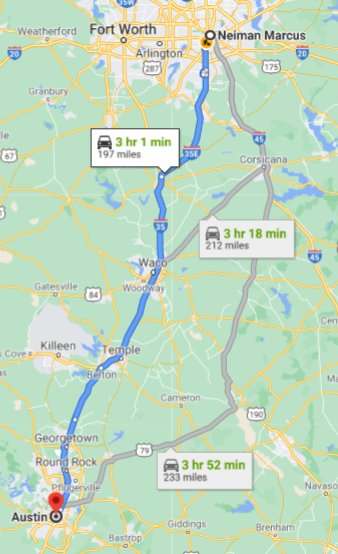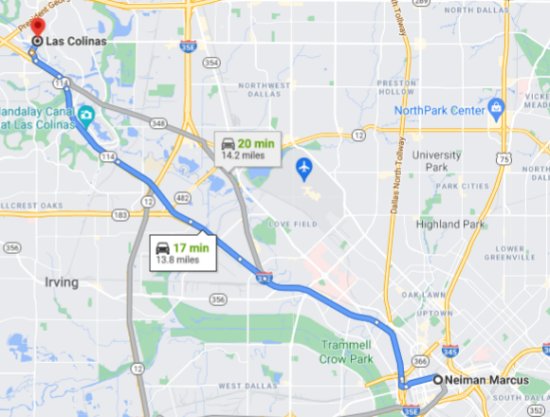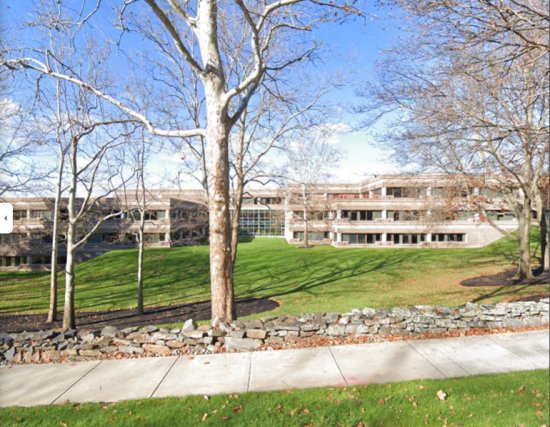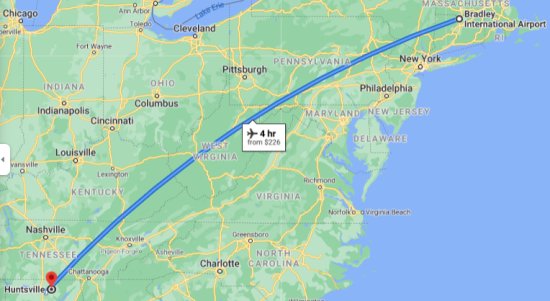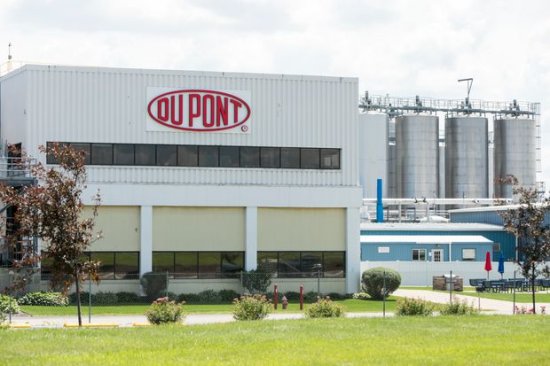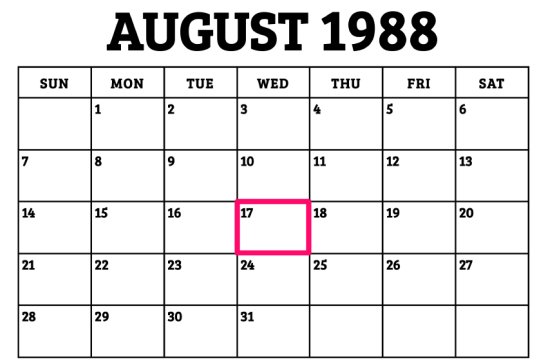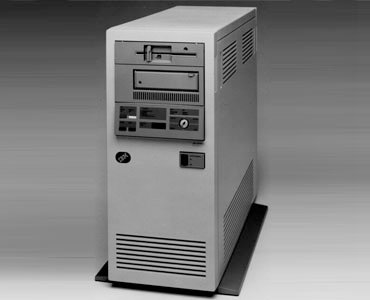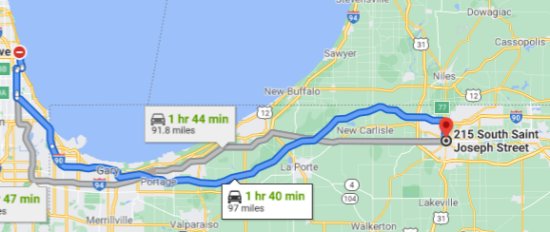A May Co. division with headquarters in Arlington, VA. Continue reading
In 1991 I received what probably was the most welcome business telephone call in my life. At the time TSI had only two AdDept1 clients, Macy’s Northeast2, and P.A. Bergner & Co.3 I had recently sent to the advertising directors of several dozen other large retailers a letter that described the AdDept system and the positive effects that it had produced at its first two installations. The phone call was from Barbara Schane Jackson4 of the Hecht Company, a department store chain in the mid-Atlantic area. I did not realize it before that first call, but Hecht’s was one of the divisions of the May Company.
Barbara explained that the advertising department was looking for a system that would handle its administrative requirements. She emphasized that it absolutely must be able to produce the data for the 790, a monthly report required by the May Co. that broke out advertising expenses and co-op at the CCN5 level. She explained that at the end of every month the financial area of the department struggled to get the report out by combining the data from many spreadsheets. They were barely able to do this by leaving six or seven PC’s running all night. There were two big disadvantages. 1) If anything went wrong, they had no plan B. The May Co. required them to file the report within a week after the end of the month. 2) Hecht’s had recently acquired more stores, and they anticipated more acquisitions in the near future. Their PC approach probably could not handle the additional load.
When I assured her that this sounded feasible, Barbara invited us to visit their headquarters in Arlington, VA, and, if possible, do a demo of the system. This was music to my ears. Not only was Hecht’s a very well qualified prospect for the AdDept System. If we did a good job, we would have a much better chance of signing up the eleven other divisions of department stores owned by the May Company that were all very well-qualified prospects for the AdDept system .
Our marketing person at the time was Tom Moran6. Sue Comparetto, Tom, and I drove down to Washington in Sue’s Saturn station wagon. We certainly could not have afforded to buy three round-trip plane tickets at the time. We stayed at a Motel 6 in Maryland just outside of Washington. We could afford nothing better. Actually we could not afford that.
I don’t remember too many of the details about the visit. We met in Hecht’s Arlington store, which was in the Ballston Common Mall. In addition to Barbara and the advertising director, whose name was, I think, Steve, we also probably met with the media, production, and finance managers. Barbara certainly provided me with all the requirements for the 790 report. It did not seem too daunting. The rules were more complicated than the ones that Macy’s used for their reports by Vice President, but the principles were very similar.
Barbara at some point demonstrated the process that they used at the time, which involved Lotus 123 spreadsheets. I could not believe how adept she was at the use of this product. Her fingers flew around the keyboard executing commands and macros.
I did a demo for them at an IBM office in . Barbara later told me that she and Steve had serious doubts about how the answer to their problems could possibly be this ugly. She might have been referring to my appearance, but I think that they were most likely underwhelmed by the AS/400’s7 green screens and the pedestrian nature of its reports. There were no graphics of any sort anywhere. The only flash that my presentation had was how fast the screens appeared. In those days users were accustomed to substantial delays going from one step to the next.
The proposal that I wrote for Hecht’s was much more detailed about the contents of the first stage of the installation than what I had submitted to Macy’s or Bergner’s. We recommended, as I recall, that they purchase a model D10, a box that was considerably faster than TSI’s developmental system, but probably not as fast as the one used by Macy’s and Bergner’s.
The hardware determination was largely guesswork. IBM did not provide the usual performance numbers about its systems. For example, there were no statistics about the clock speed of the processors. I later came to understand why IBM did this, but at that time it seemed very strange that two different models actually had the same processors. The only difference was that the more expensive one had the capacity for more disk drives and memory cards. It did not come with these features; it merely had a way to attach them. I always recommended the more economical system unless the client really had a need for those drives or cards.
The installation began in October of 1991. The process of integrating the necessary changes was, as expected, difficult. However, it was never unpleasant. Barbara was a superb liaison, and most of the modules went in with no significant problems. The changes that I had to make to the cost accounting8 programs caused me quite a few headaches.
At one point I tried to document the steps of the “explosion” process—TSI’s term for the set of program that created the detail and summary files used by the programs that produced the 790 report. I quit after I had produced ten pages. I was not close to finished, and the result was totally unreadable. Every sentence started with the word “If”.
A major enhancement for Hecht’s provided for different types of costs being allocated in different ways. This required establishment of a table of allocation codes as well as an interface with the mainframe’s sales system to obtain the sales by department for the month. We also provided for a set of reconciliation programs to check the consistency of the results.
I distinctly remember two of the first attempts that we made to generate the cost accounting files. In both cases, Barbara submitted the program to run in batch mode (not tying up any input devices). I was in Enfield, but my AS/400 session had “passed through” to Hecht’s system. At the same time I was on the phone with Barbara.
In the first instance I was a little bit worried about how large the detail file that the system created might become. I monitored it and what the percentage of the ads that the program had already handled.
After just a few minutes I realized that the file was becoming very large very quickly. “Oh, no!” I warned Barbara. “The program is eating up the disk like the Blancmange! You’ve got to go to the system console and kill the job immediately.”
I am not sure whether Barbara understood the Monty Python reference (in which a Blancmange from planet Skyron of the Andromeda Galaxy eats people in order to win Wimbledon), but she laughed anyway. She certainly knew what a blancmange was; she had actually majored in French. She killed the job in plenty of time, and I deleted the records in the file.
The disk-gobbling program could have been a serious problem. If the the system’s disk drives had approached 100 percent usage, I am not sure what would have happened. It would not have been pleasant; we almost certainly would have had to involve IBM. After the job was killed, and the file was whittled down to size, I had to change the program to summarize in a few places where it had been writing details. This was a major repair, and it took me a while.
The second incident involved some kind of tricky allocation that I had not anticipated. I don’t remember the details. Barbara had already called two or three times to report that this aspect of the program was not working correctly. Each time I thought that I had fixed it. In the last call I admitted that “I just can’t seem to get this right!” I did not mean that I was giving up on it. In fact, I found the final problem in less than an hour after acknowledging my failures.
When we got the cost accounting program to work perfectly, Hecht’s was very happy.
I made quite a few trips to Hecht’s during the first phase of the installation. There were direct flights from Bradley to National Airport in Washington on US Airways. From the airport I took the Metro or a taxi to Ballston. I could be at Hecht’s before business hours, a feat that I could never manage at Macy’s, which was less than half as far away from Enfield.
If my visit was for more than one day, I generally stayed at a Comfort Inn that was within a few blocks of the mall.9 I always left the hotel early in the morning. I bought a Washington Post from the dispenser just outside of the mall—for twenty-five cents! I then took the escalator down to the food court and bought a Big Breakfast or an Egg McMuffin and a large coffee from McDonald’s. I ate my breakfast while reading the Post. I also drank about half of the coffee.
Coffee in hand, I rode the escalator back up. I then entered Hecht’s through the employee entrance, signed in, and took the elevator up to the advertising department. I worked mostly with Barbara. She did most of the training or the other users.
About half the time Barbara and I ate lunch at a restaurant in the mall. It was called the American Restaurant or something similar. We talked mostly about the installation and related matters. She knew that I went jogging in the evenings when I was there; she was surprised that I could survive without my glasses. She was a swimmer. The ropes that marked the lanes evidently kept her from getting lost.
She also told me something about needing to use a shop-vac on one occasion.
All of this seemed a little strange to me. Her husband, Kevin Jackson, also worked in the advertising department. My recollection is that he was an art director; he had no contact with the system. He never came to lunch with us.
Barbara resigned from Hecht’s in May of 1993 to work for Barrister Information Systems, a company that created and marketed a software system for law firms.
After Barbara left, Hecht’s continued to use the system, but they did not ask us for much more work, and they did not take advantage of many of the programs that they had. I do not remember the names of very many employees. In fact, the only one whom I recall was Ellen Horn, and that was mostly due to the fact that I saw her so often at her next stop, Belk.
I discovered quite a few notes about the account that covered the period from 2000-2003. I have somewhat vague memories of some of them. Here are some of the people who were mentioned.
- Jim Tonnessen10 was our liaison at the turn of the century. I think that he also managed the department’s network, which was installed after AdDept was functional. Jim took a job with UUNet in February, 2000.
- Jim was replaced by Clint Gibson, but he also departed in August of the same year.
- The nexttechnical liaison was Sam Wiafe, who was later known as Kwadwo.11 I guess that he knew computers, but he knew nothing about AdDept, the AS/400, or the needs of the advertising department. The IT people tried to implement a firewall for the AS/440 in order to control access. It was a silly idea that angered me a little.
- Jennifer Jones12 was the manager of the advertising business office in 2000. Chris Dechene13 held that position before her. I made a trip to Hecht’s in June of 1999 for the specific purpose of getting Chris acquainted with the cost accounting programs. One of the problems that we encountered at Hecht’s was that the financial people were rotated around every two years. So, as soon as anyone got a good handle on the cost accounting process, we could expect them to be transferred to another area. These people also were not exceptionally good at documenting their procedures.
- Prior to 2000 Hecht’s for some reason did not use one of AdDept’s best features, insertion orders for newspaper advertising. On a trip there in that year I met Renee Gatling14, Ellen Rison, and someone named Sharon. Renee was already pretty good at getting around in AdDept. I convinced them that they should be faxing their orders using AdDept.
- By the end of 2000 I think that our primary liaison at Hecht’s was someone named Amy. I don’t remember her, but when we installed the Media Management + interface for broadcast, she was involved. The broadcast buyers at that time were named Krista and Tiffany. I found their names in my notes.
- In October 2002 Brian Kipp, whom I had worked with at Meier & Frank, became the planning manger in the advertising department. Carolyn Thompson and a woman named Renée worked for him.
- I spent a good deal of time on one visit with Rene Basham15, who was the manager of the advertising business office. I was astounded to learn that she had not been using the reconciliation process that we set up for the cost accounting. I went through this with her and also worked on documenting the process for the next person who was rotated into the slot.
In looking through the notes I discovered two other interesting things. The first was that Hecht’s used a product called Wam!Net to deliver its ads electronically to the newspapers. The Associated Press developed a product called AdSend, which most large advertising departments used. At the time (early 2000) TSI was beginning to roll out our AxN16 product for insertion orders via the Internet, and we were contemplating using the connection that the program established to send ads as well.
One day while I was at Hecht’s in 2002 the performance on the machine was terrible. In the notes I had attributed this to CFINT, an IBM program that I had completely forgotten about. It was a misbegotten effort from IBM to make customers pay more for use of the system for interactive jobs than for batch jobs by slowing the entire system down if the percentage of CPU used by batch jobs was too high!
The main effect of this effort, as far as I could ascertain, was to infuriate the customers. It is possible that the real motivation was to prevent the AS/400 from encroaching on the sales of other IBM systems.
I have one other peculiar recollection. At some point after 2002 I was in the office on a Saturday. It must have been November, and I must have passed through to Hecht’s system to help someone there with a problem. We exchanged a few messages. I then whimsically invited her to come the following day to a big party that I was throwing to celebrate the divestiture of the foliage on the nine maple trees on my property. I recommended that she recruit a bunch of people with their own rakes. An early start would reward them with the spectacular view of the sunrise from the New Jersey Turnpike. I reckoned that they should have time for six or seven hours of New England’s favorite autumnal sport before returning home. They could make it back by midnight unless they encountered traffic.
On February 1, 2006, Federated Department Stores, which had purchased the entire May Co., dissolved most of the former May Co. divisions, and the existing Hecht’s stores were divided between Macy’s East and Macy’s South. Few, if any, employees from Hecht’s headquarters in Arlington went to work for Macy’s.
1. The design of the AdDept system is described in a fair amount of detail here.
2. A description of the Macy’s installation has been posted here.
3. A description of the installation at Bergner’s can be read here.
4. Barbara Schane Jackson has her own consulting firm in 2021. Her LinkedIn page is here.
5. Every department was assigned to exactly one CCN. The CCN’s were the same for each division of the May Company. The N stood for number, but I don’t think that I ever knew what the two C’s referred to.
6. More information about Tom Moran’s career at TSI can be found here.
7. The AS/400 was a multi-user relational database computer introduced by IBM in 1988. It is described in some detail here.
8. In AdDept we used the term “cost accounting” to describe the process of allocating costs to departments (or, in some installations, stores) for the ads in which their merchandise appeared and the cost of more generic ads (called “storewide”). This was a complicated activity that would require a small army of clerks if not done on the computer. Although the May Co. had precise rules about this process, it was almost impossible for the smaller divisions, which ran just as many ads (in fewer newspapers) and had just as many departments, to accomplish it within the deadlines. They therefore cut corners.
9. The mall is now called Ballston Quarter. It was (pretty much) closed down in 2016 and reopened in 2018. The hotel is still nearby.
10. In 2021 Jim works for Lockheed-Martin. His LinkedIn page is here.
11. Kwadwo’s LinkedIn page can be viewed here. In 2023 he was working for Inova Health Systems.
12. Jennifer Jones works as treasurer of a school. Her LinkedIn page can be found here. I wonder how many of her acquaintances have also seen The Song of Bernadette, the movie that won the actress Jennifer Jones an Oscar, and read all thirteen of the articles championing Losing Trick Count in the Bridge Bulletin written by the bridge expert Jennifer Jones. Not many, I wager.
13. Chris Dechene’s LinkedIn page is posted here.
14. Renee Gatling’s profile on LinkedIn can be found here.
15. Rene Basham is still in the Washington area. Her LinkedIn page is here.
16. The design of AxN is described in some detail here


